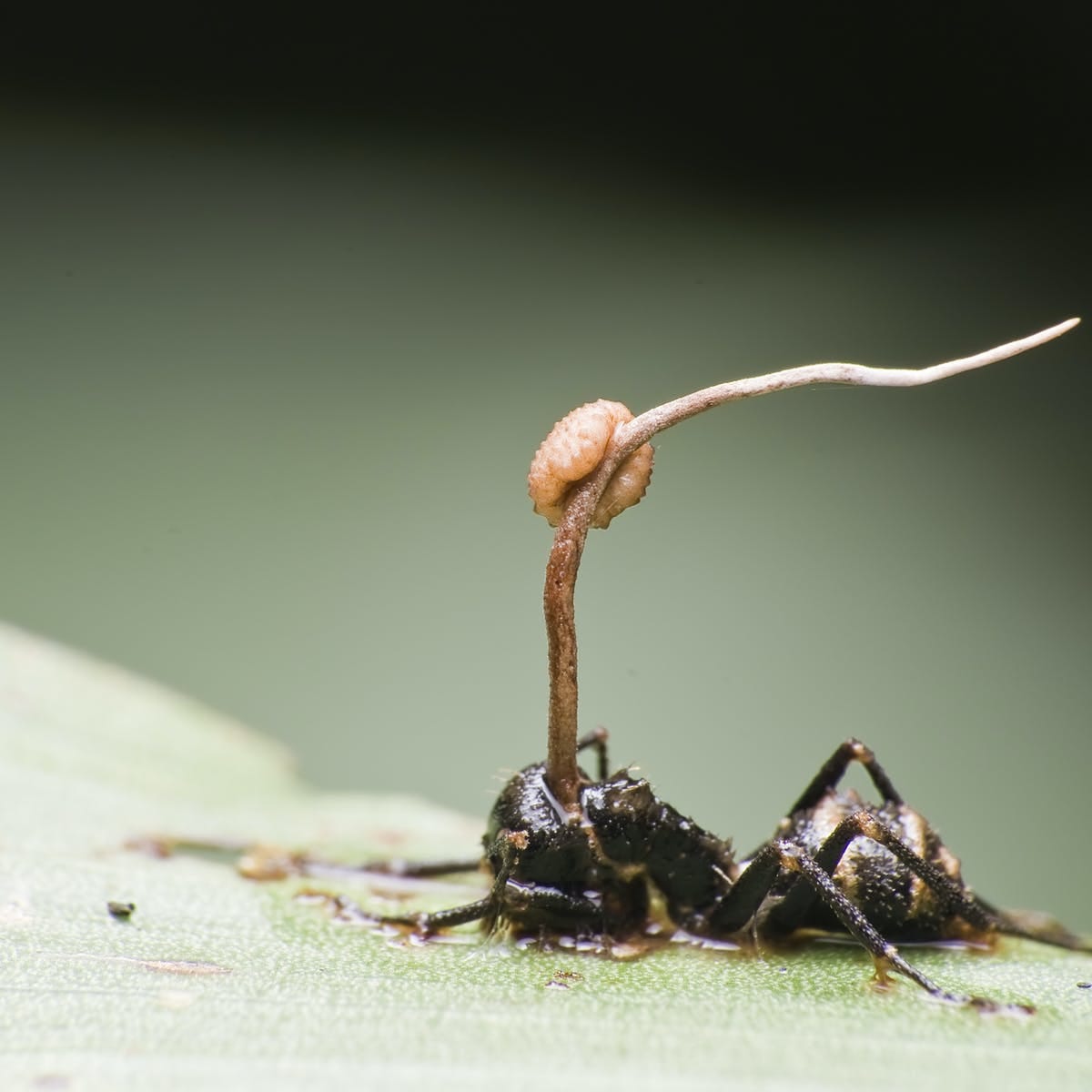Transmission #10: McFlurries, Better Pockets, UFOs and Merlin Sheldrake's fabulous fungi.
Design, ideas and other flotsam
Hello. Welcome.
This is Transmissions by me, Martin Brown. Father. Husband. Design Lead at Craig Walker and lecturer at RMIT. Marty to most.
This is an ongoing fortnightly newsletter that collates some of the more interesting stories, links, quotes and other curios that float my way.
I’m very excited to say this is the 10th edition of Transmissions. Sending out a regular newsletter is far from a herculean task, but it’s one that I’ve been thoroughly enjoying, and I’m glad I’ve made it this far. It’s gone slightly beyond an impulse, a spasm of activity, and it feels, now, like it might be an actual thing.
It’s an extra-special bumper-sized edition today, so strap in with a coffee and a biscuit and enjoy.
If you’ve been liking this newsletter, please help others to discover it by sharing it on your socials.
And if you’re new here, then sign up now to get more like this in your inbox.
Design
They Hacked McDonald’s Ice Cream Machines—and Started a Cold War
Andy Greenberg, Wired
Capitalists like the idea that markets are efficient distributors of the flow of capital, and for a lot of things, a lot of the time, they’re not wrong. But then there are the swirling eddies. The places where the system is engineered to such a degree of complexity that they become vortexes – sucking in time, cost and resisting any and all efforts at reform. One might look at the American healthcare system as an example, or the challenges of financial regulation. Or, as this article expounds at length, you might look to the arcane technology buried within the ice cream machine of your local McDonalds.
On Trouser Pockets
Sam Bleckley
An investigation that ventures that trousers pockets have essentially become vestigial artifacts, designed for a different time and are now embedded in industrial production processes that are expensive and difficult to change at scale. It asks, could we design a better pocket, and encouragingly, prototypes some solutions that better accommodate our digitally-tethered lives.
Many of us spend most of our time sitting, but all four traditional pockets are totally inaccessible in that position. So we take out our phone, just in case, before we sit down at the restaurant — guaranteeing a distraction.
Ideas
The Great Online Game
Packy McCormick, NotBoring
This article by Packy McCormick gets under the skin of what has been simmering for a few years. That essentially, digital tools and platforms have enabled a new kind of video game: life.
The Great Online Game is free to play, and it starts simply: by realizing that you’re playing a game. Every tweet is a free lottery ticket. That’s a big unlock.
Basically, if you get good at discovering and manipulating the hidden rules of the internet, then you win. And thanks to crypto (recent dip notwithstanding) winning at the internet is increasingly translatable into winning IRL.
More discussion along a similar track here, wherein the commodification of Great Online Game is given the grimace-inducing moniker ‘The Passion Economy.’ (Warning, contains headers with titles like ‘On Monetizing Individuality.’)
This article reminds me of Eric Weinstein’s notion of ‘Kayfabe’ – that the world has taken on the dimension of professional wrestling, in that the real and the fake have become ‘fully conflated.’ Further reinforcing this point, is the story of Vladislav Surkov, the Russian former avant-garde theatre director, who turned his skills to orchestrating Putin’s propaganda efforts, reasoning that suspending disbelief in a theatre was not really all that different from manipulating the beliefs of a whole nation.
How the Pentagon Started Taking UFO’s Seriously
Gideon Lewis-Kraus, The New Yorker
Speaking of kayfabe and the conflation of the real and the imaginary, get ready for a lot of UFO stories in the news. Next month, the US government is expected to release a report that will detail a raft of unexplained aerial encounters - and this article gives some background about what has led us to this point. There are some moments in the article where we’re clearly jumping the shark (such as the presence of Tom DeLonge, UFO-advocate and former front man of Blink-182), but there are also enduring, genuine, truly baffling mysteries. There are a lot of reasons not to believe in UFOs, my favorite being that there’s no way Donald Trump would have been able to keep his mouth shut if he knew about them. But nevertheless, the evidence seems to be mounting that somewhere, somehow, the truth might just be out there.
From it’s Myriad Tips
Francis Gooding, LRB
A review of Entangled Life, a new book about fungi by Merlin Sheldrake (yes, that is actually his real name). There’s an awful lot going on in the world of fungi, and the article contains a bevy of extraordinary factoids, including this:
If the mycelial threads in just a teaspoon of soil were unravelled and laid out, they might stretch anywhere from ‘a hundred metres to ten kilometres’.
And of course, nature’s ultimate horror-show, the fungus Ophiocordyceps, which infects carpenter ants.
Inside the body of an infected ant, it begins to develop a mycelial network. Hyphae travel through the ant’s body cavities, into its limbs and organs: an infected insect becomes about 40 per cent fungus. Once this fungal growth is complete, the normally ground-dwelling ant leaves its nest and climbs the nearest plant. At a height of around 25 centimetres – ‘a zone with just the right temperature and humidity to allow the fungus to fruit’ – it orients itself towards the sun; at high noon, it clamps its jaws round a leaf vein, in a ‘death grip’. Mycelium grows out of the ant’s feet, plastering it to the leaf. Sutured into place, jaws rigid, the ant’s body is then digested by the fungus: a small mushroom grows out of the ant’s head, releasing spores which drift down onto the ants passing below, beginning the cycle again.
If you haven’t had enough fungi-news, see my post from last week, where I quoted from this fantastic article that describes the incredible subterranean fungal communication networks that power healthy forests.
And just one more piece of tabloid fungi news: Space Fungi is eating the international Space Station! A headline for the National Enquirer if there ever was one.
Quotes
The land required for solar panels alone to provide all global energy is 450,000 km2, 0.3% of the global land area of 149 million km2. That is less than the land required for fossil fuels today, which in the US alone is 126,000 km2, 1.3% of the country.
— The New Yorker, quoting a new report. (ht Kottke)
Chart of the Week
Other
🤣
‘Real toad stranglers' and other wonderfully evocative colloquialisms, jotted down from a Texan grandmother, born 1905. (A toad strangler, btw, is a heavy rainstorm.) Link
🥤
When 7-11 goes to war with its own franchisee. Link
🌩
One very extraordinary cloud. Link
🚶🏽♂️
Video of the streets of London in 1967, where ‘everyone looks like they’re from Scooby Doo.’ Lin
You made it this far. I hope you enjoyed Transmissions. If you haven’t yet, please consider subscribing.









